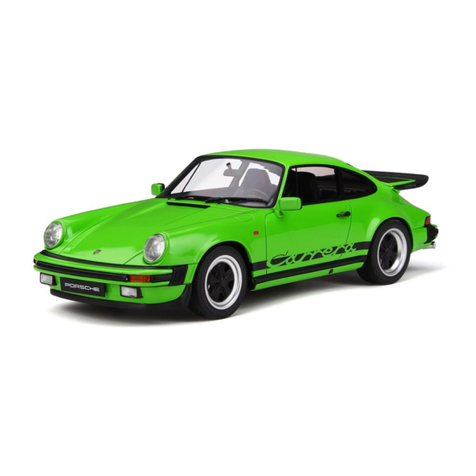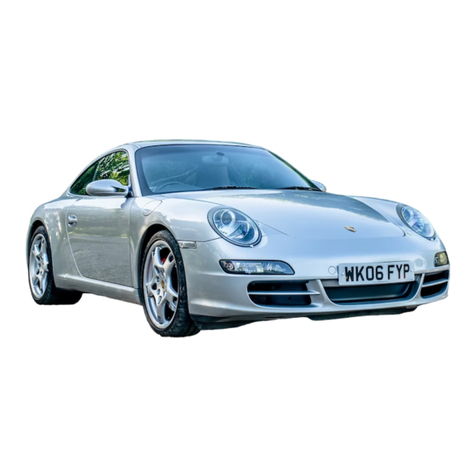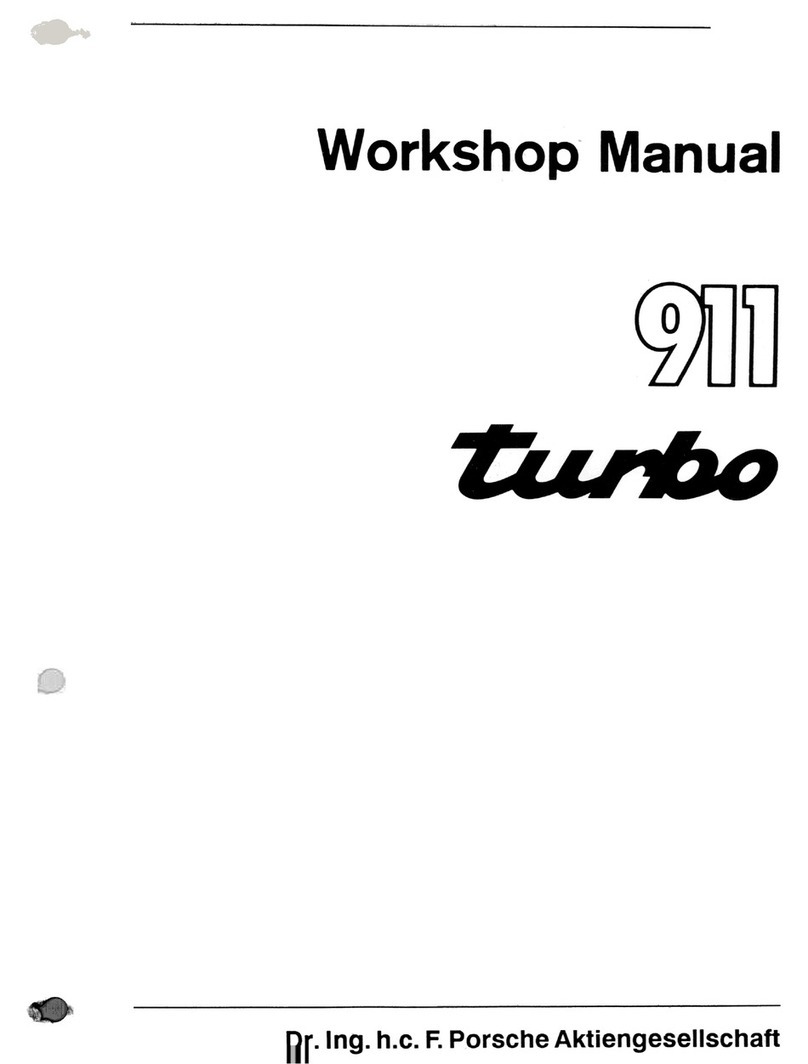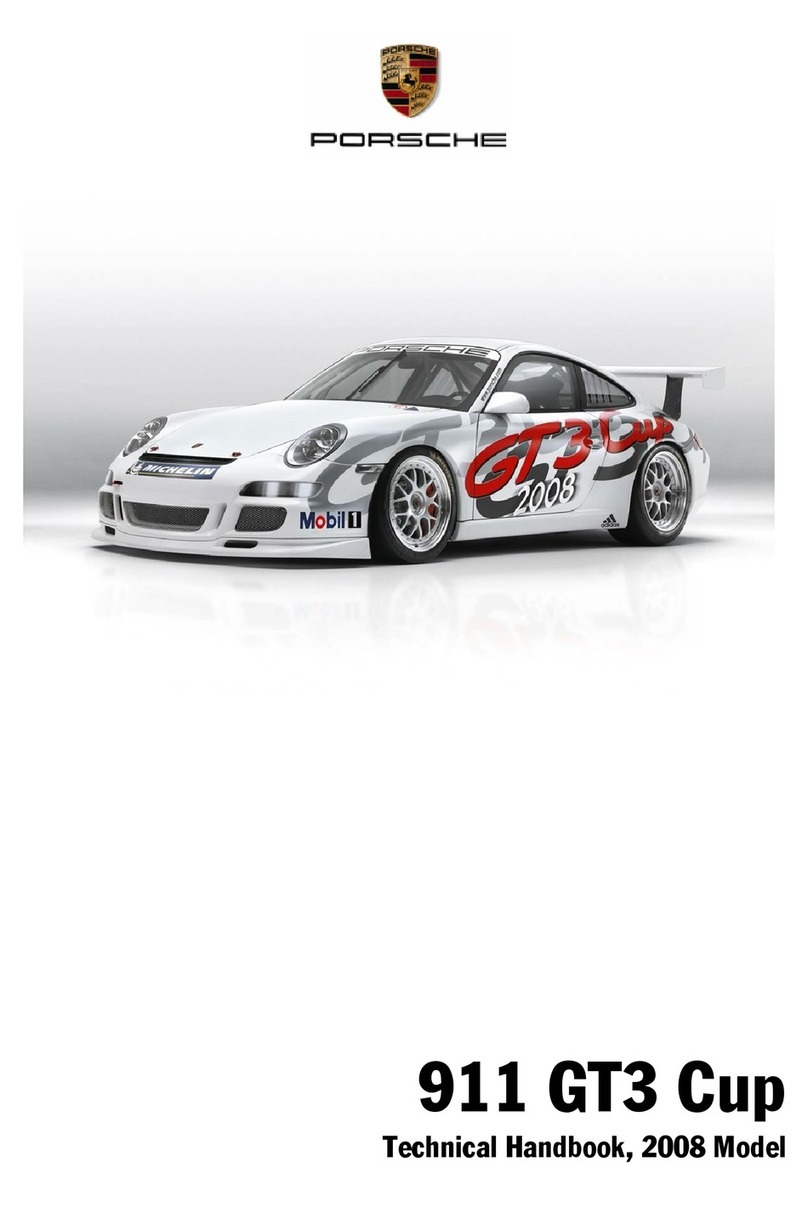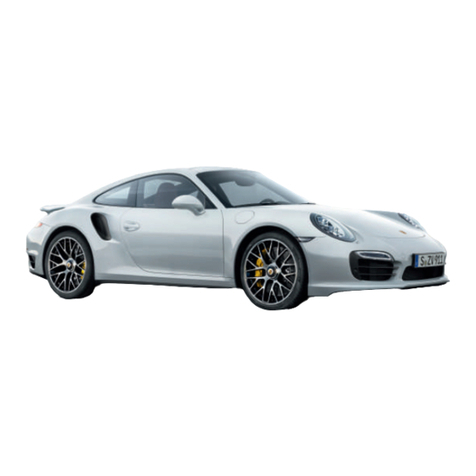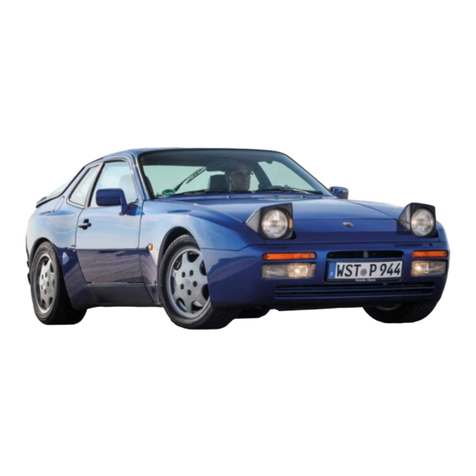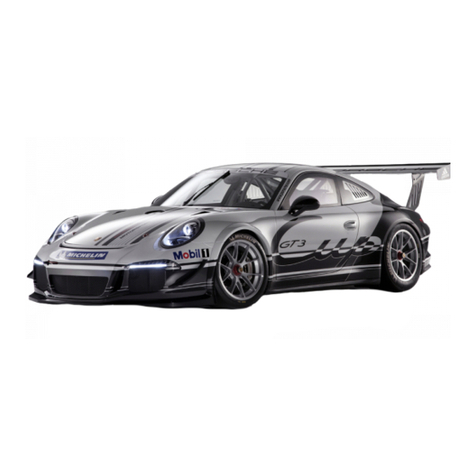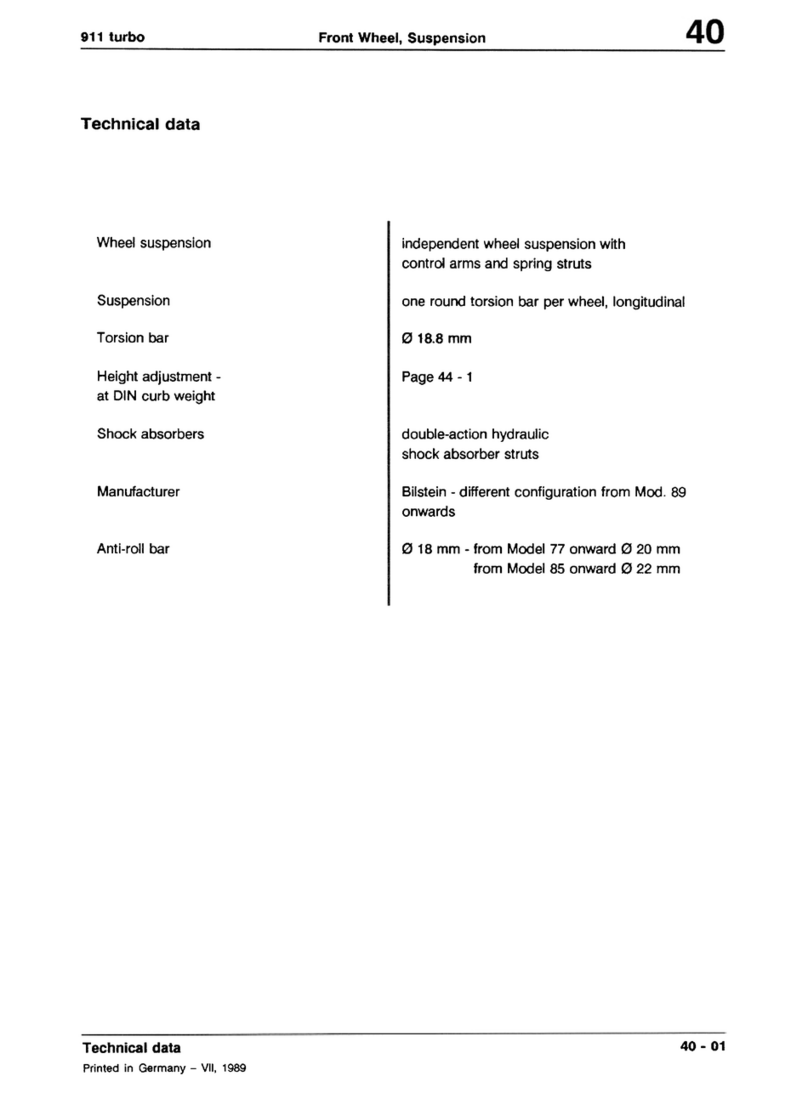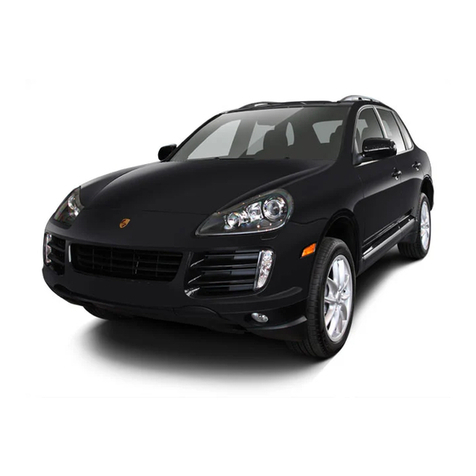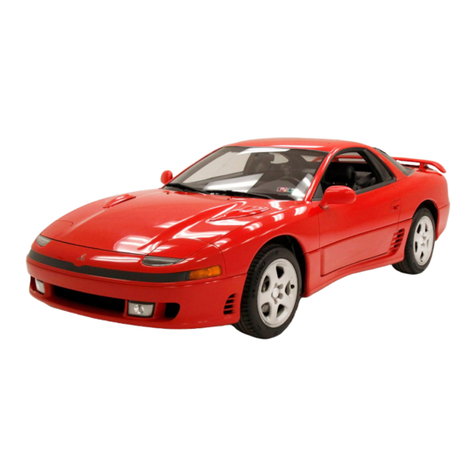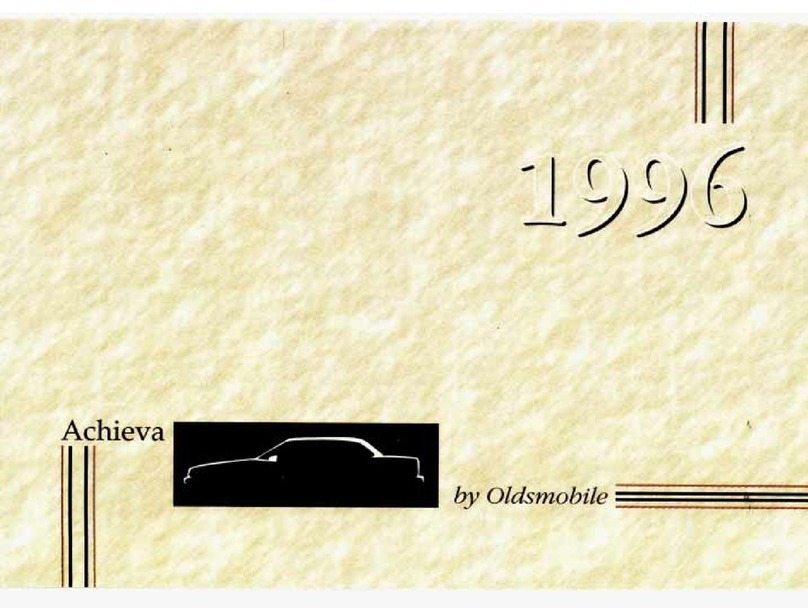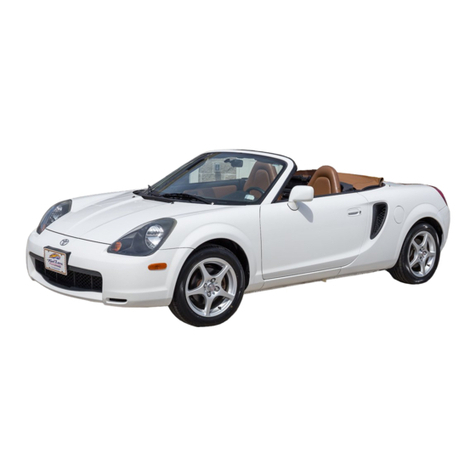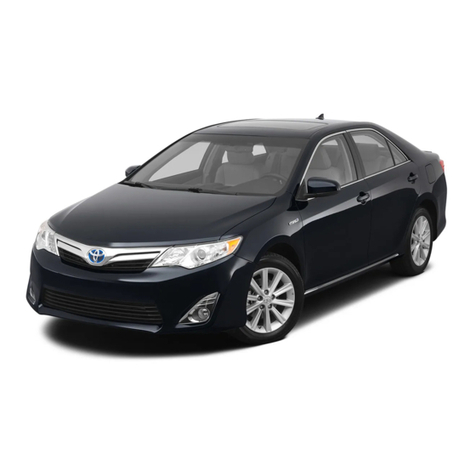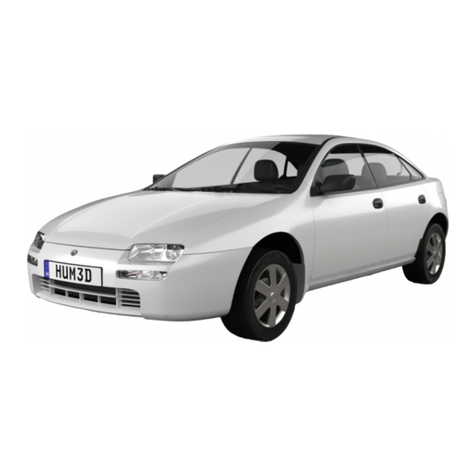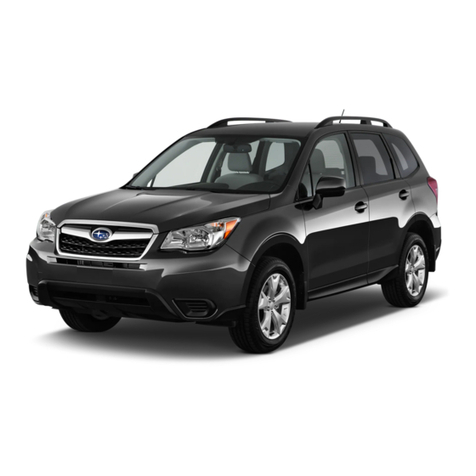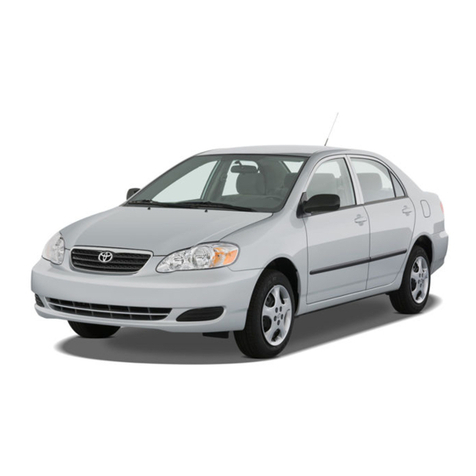911 Turbo | The 911 Turbo
Maximum torque output of
343 Nm was unprecedented in a
3-litre engine. This exceptional
performance necessitated a new
gearbox design featuring specially
reinforced gears.
The second 911 Turbo, launched
in 1977, developed 300 bhp
from a 3.3-litre intercooled engine
.
Brake performance was similarly
enhanced, combining four-piston
aluminium fixed calipers with
cross-drilled discs.
In 1987,the 911 Turbo was joined
by the 911 Turbo Cabriolet and
911 Turbo Targa.
At that time, opinion was divided
on the necessity of an open-top
model. For the majority of people,
the 911 Turbo was a road-going
racing car, which meant a fixed
metal roof was essential. Strange,
how opinions change. After both
models were discontinued in
1989, there was a 14-year wait
until the next 911 Turbo Cabriolet.
In 1993, we launched the last
911Turbo with dedicated rear-wheel
drive. Based on the Type 964
platform, it used a 3.6-litre engine
to produce 360 bhp. Its Type 993
successor, launched in 1995,
set a range of new benchmarks in
supercar performance. All-wheel
drive ensured greater active
safety as well as better driving
dynamics. The power distribution
had a rear-axle bias that retained
the familiar Porsche handling
characteristics. Twin exhaust turbo-
chargers
offered better response
and a more harmonious build-up
of power.The last 911 Turbo to
feature an aircooled engine, it
offered maximum output of 408 bhp
from a 3.6-litre displacement.
The first Porsche racing car to
feature turbocharged power
made its debut in the early 1970s.
The 12-cylinder engine in the
legendary 917 used a twin-turbo
system to achieve a colossal
1,000 horsepower. In 1972, the
917/10 with 5-litre turbo engine
claimed the North American
CanAm championship. In the
following season, the 917/30,
developing 1,100 horsepower from
a 5.4-litre unit, became the most
powerful racing Porsche of all
time.
This invaluable race experience
inevitably found its way into our
production road car development.
The first 911 Turbo was unveiled
to the world in 1974. Developed in
the midst of a global oil crisis, it
was a homologation model for FIA
Group 4 racing. The maximum
boost pressure available from the
turbo was restricted for normal
road use. Originally conceived as
a limited edition of 400 examples,
it was the start of the Turbo
legend.
This original model featured
widened wheel arches as well as
specially developed front and
rear spoilers. These major aero-
dynamic refinements were
essential requirements given the
increased engine performance.
Producing 260 bhp, the first
911 Turbo could reach 100 km/h
(62 mph) in as little as 5.5 seconds.
911 Turbo 3.0 (1974), 911 Turbo (2006)
· 14 · · 15 ·
